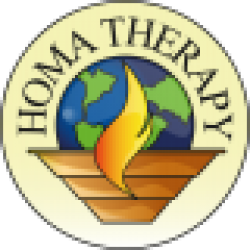What is a Noah’s Ark Project?
A Noah’s Ark project is a special case of a Resonance Point. A group of farmers who want to become organic or who are already organic join hands to create a complex of farms on an area up to 200 acres where a Resonance Point has been established. The farms may be owned by different farmers but they must be contiguous, i.e., touching each other. No agro-chemicals should be used within the 200 acre area.
By practice of Homa organic farming, nutrients are injected into the atmosphere and this becomes the antidote to acid rain, ozone holes, radiation coming from the bowels of the earth, etc. Based on practical experience gained in the Amazon region of the Republic of Peru, South America, a model for future farming has been developed which will promote food security at the village level.
Noah’s Ark Project comprises five components:
- Establishment of a Resonance Point in 200 acres
With Homa organic farming we can get nearly double the yield per acre of sunflower, safflower, soya bean, and pigeon pea, as compared to any method known to modern science. Sorghum and maize yield about one and a half times the normal crop. There is not only an increase in per acre production but also a saving of cost per acre. The farmers maintain their own seed bank for the next season’s crops. This will create an Evergreen Revolution for village level food security. - Maintaining 24 hour round-the-clock Om Tryambakam Homa for Total Healing
Due to Homa going on round-the-clock the place becomes healing for humans, animals and birds. People can sit in this area and they will get healed. Various psychiatric problems, mental tension, hyperactivity in children and adults, schizophrenia, autism, etc. can be cured without medicines simply by being in this atmosphere of round-the-clock fire and Mantras. - Cattle Breeding
A herd of approximately 50 cows, bulls and calves is maintained which will supply all the cow dung and ghee required for maintaining Agnihotra and the 24 hour round-the-clock Om Tryambakam Homa. For that, at least 30 acres out of the 200 acres will be set aside for fodder. A successful breeding program of pure breeds will provide a good income for the project. - Vermicompost + Gloria Biosol bio-fertilizer
Vermicompost plus Gloria Biosol bio-fertilizer will enhance soil fertility. This bio-fertilizer section can be set up alongside the cattle complex. Biosol is superior to any other bio-fertilizer available in the market. Ten by one thousand litre tanks will produce three thousand litres of Gloria Biosol per month. Excess production can be marketed to other interested organic farmers. The aim is total self-sufficiency within the 200 acre Resonance Point. - Promoting Agnihotra ash folk medicines in the neighboring villages
Twenty to thirty villages will be selected in the area surrounding the two hundred acre project. Homa Therapy volunteers will visit each of the villages, in turn, starting women’s healing circles. The villagers will be taught how to make simple folk medicines from Agnihotra ash as developed in Germany and how to use these medicines on the psychosomatic level to cure even long term diseases which pharmaceutical medicines were unable to cure. Agnihotra ash medicines are always given free of charge.
All infrastructure costs for the Resonance Point, cattle complex, vermicompost, Gloria Biosol and cow breeding program could be recovered in four years taking into account only the increase in per acre production and saving of cost per acre. A portion of the profit is kept aside as a Rotating Fund. After four years this money could be given to another group of farmers for setting up the infrastructure for another Noah’s Ark Project.

